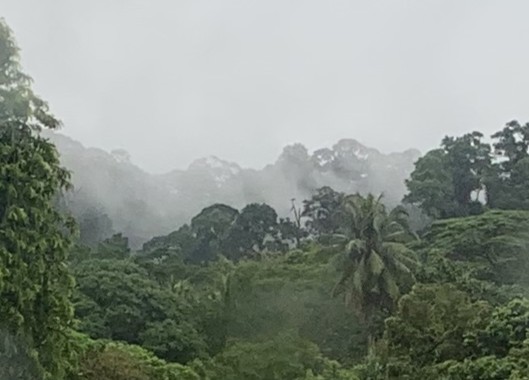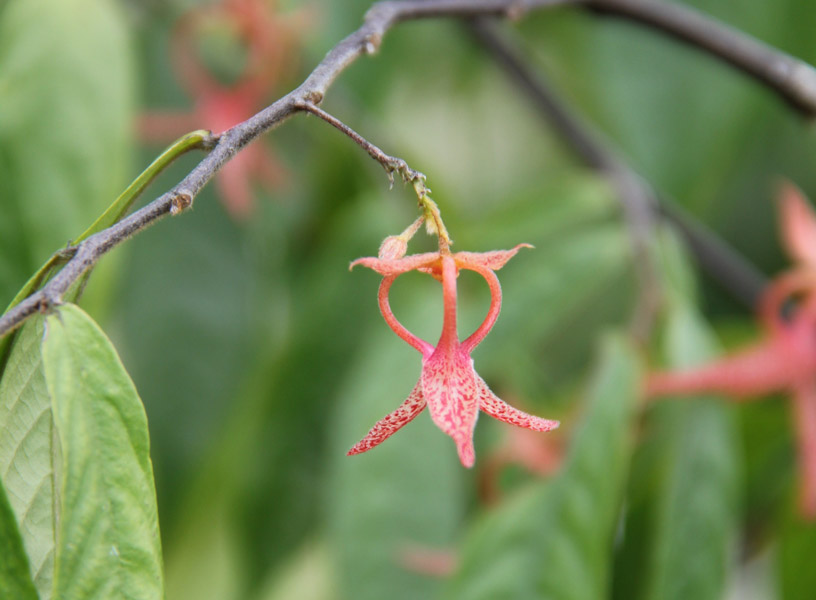News Listing Page

Dipterocarps: Pillars of the rainforest
21 November 2025
Dipterocarp trees are dominant in the rainforests across the Sunda region, including Singapore. These towering trees play a key role in shaping the forest environment. Researchers document the complex structure of these forests and the ways dipterocarp trees support plant regeneration and wildlife. This ecosystem faces ongoing pressures from logging, land conversion, and climate change, highlighting the need for active management and strong conservation efforts.

New Entries to the Flora of Singapore
10 October 2025
As part of ongoing efforts to document non-native plants that have become established in Singapore, researchers have recently added five new records of casually occurring or naturalised plants to the nation’s official plant list. The team also discusses how these plants may have arrived and provides descriptions based on plant samples collected locally and stored at the Singapore Botanic Gardens Herbarium.

New Ginger Species from Central Vietnam
16 September 2025
A new ginger species, Boesenbergia monophylla, has been discovered in Central Vietnam's Quang Ngai Province. It is distinctive for being the only single-leafed (monophyllous) species among its relatives in Cambodia, Laos and Vietnam. The species differs from another single-leafed ispecies, B.prainiana, by its dark green velvety leaves, long petioles, generally concealed inflorescence, and pale-yellow flowers with red-pink banding on the labellum. This discovery brings Vietnam's total Boesenbergia species count to seven.

Rethinking Plant Genera - Lessons from Annonaceae and Rubiaceae
08 August 2025
Large plant genera often conceal cryptic diversity and unresolved taxonomies. A recent study by the National Parks Board examines various approaches to tackling taxonomic challenges in large plant genera in Annonaceae and Rubiaceae families. The research recommends shifting away from the old-fashioned, individualistic style of plant taxonomic research and embracing global collaboration, supported by modern tools such as molecular data, morphological analysis, and updated genus concepts. Prioritising teamwork and global cooperation, especially with local botanists in biodiversity hotspots, offers greater potential for meaningful taxonomic revisions.

Tracing the Origins of Orchid Diversity
10 July 2025
This global-collaborative review investigates the evolutionary origin and global diversification of orchids, one of the most species-rich groups of flowering plants. Using an expanded taxon sampling of 1,921 species and georeferenced data from world botanical databases, the study refines the orchid diversification timeline previously from 112 - 76 million years ago to approximately 83 million years ago in Laurasia, earlier than the extinction of dinosaurs. It challenges the long-held belief that Australia is the centre of orchid speciation, and instead identifies southern Central America as the origin for modern orchid diversity. The study attributes orchid diversification to ecological factors such as deceptive pollination, fungal symbiosis and changes in environmental conditions.
.jpg)
Unlocking the Secrets of Hoya Pollinaria Diversity
02 June 2025
A comprehensive study of 85 species and 4 subspecies of Hoya revealed ten distinct pollinarium types, highlighting structural variations across the genus. Researchers observed differences in key floral traits, such as the shape and texture of pollen structures, which are important for successful pollination. These traits were analysed using a phylogenetic tree, which showed that similar features had evolved multiple times across unrelated groups, a pattern known as convergent evolution. These findings enhance our understanding of floral adaptations in Hoya and offer valuable insights for taxonomy and conservation of this beloved tropical genus, which thrives in Southeast Asia’s diverse habitats.
